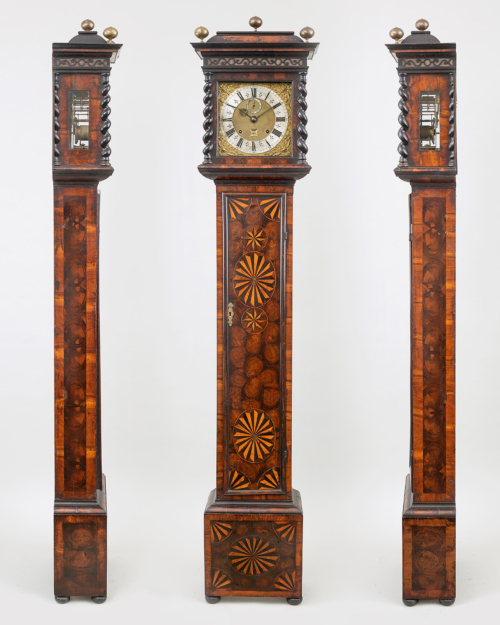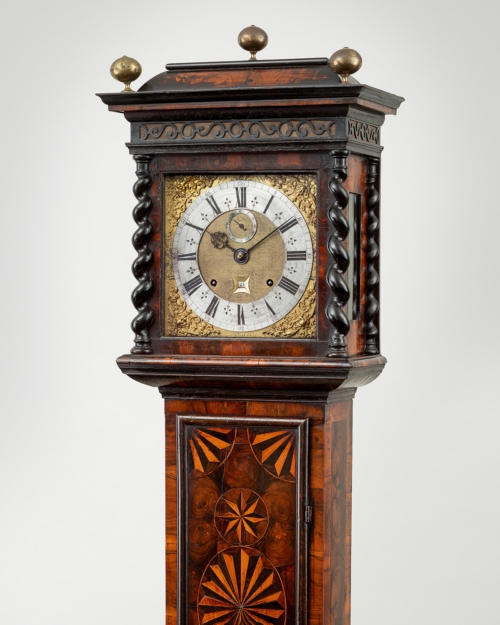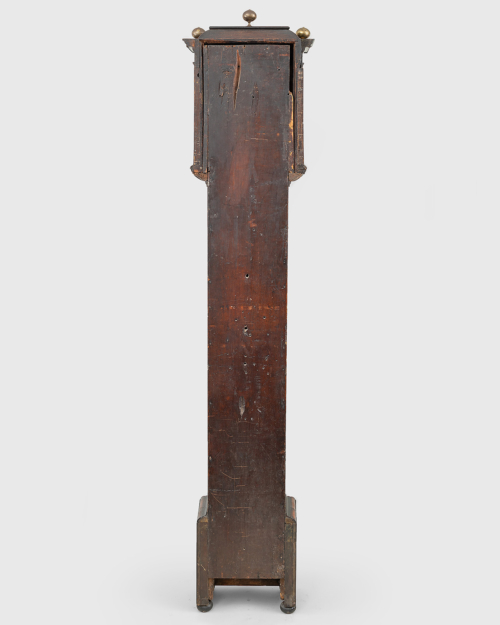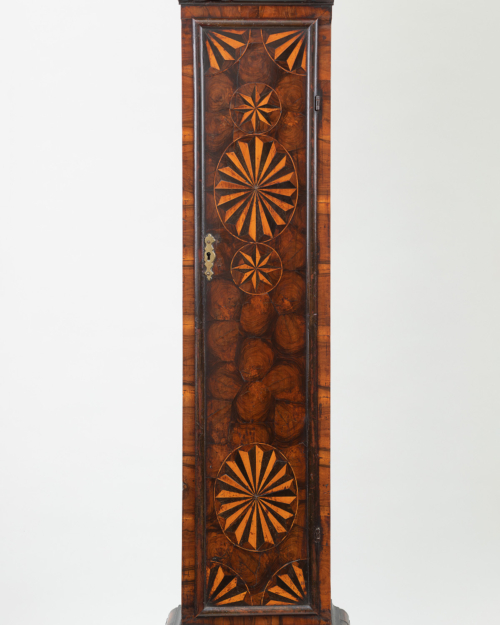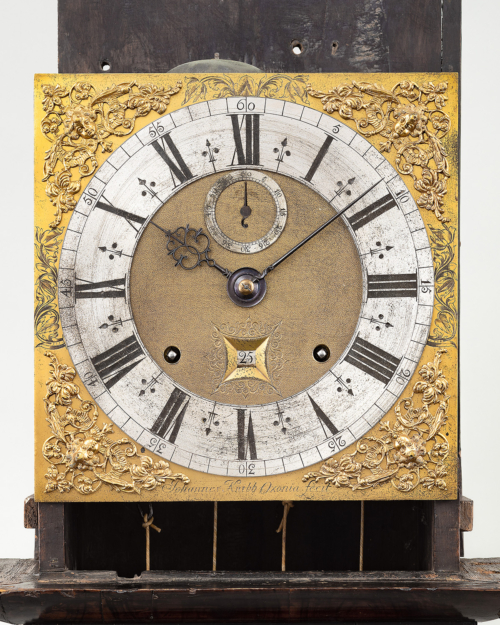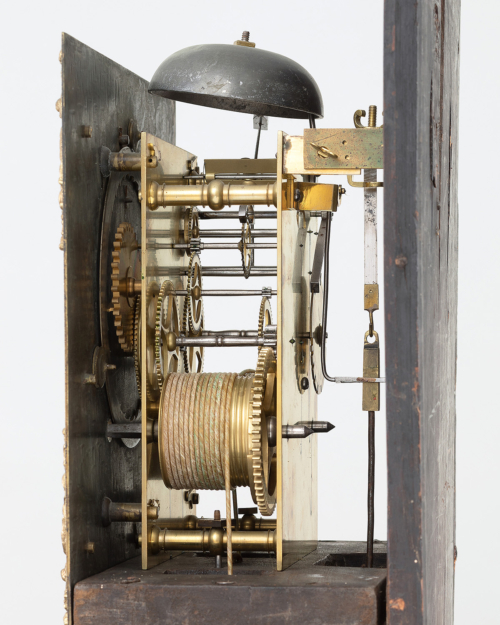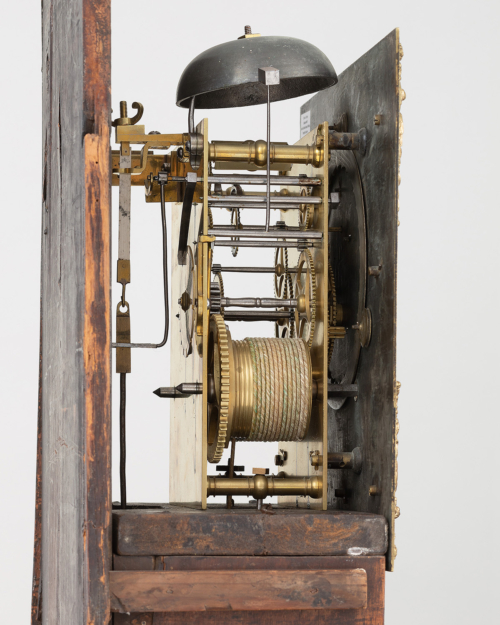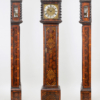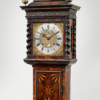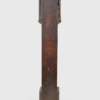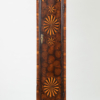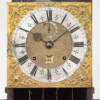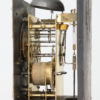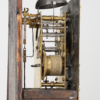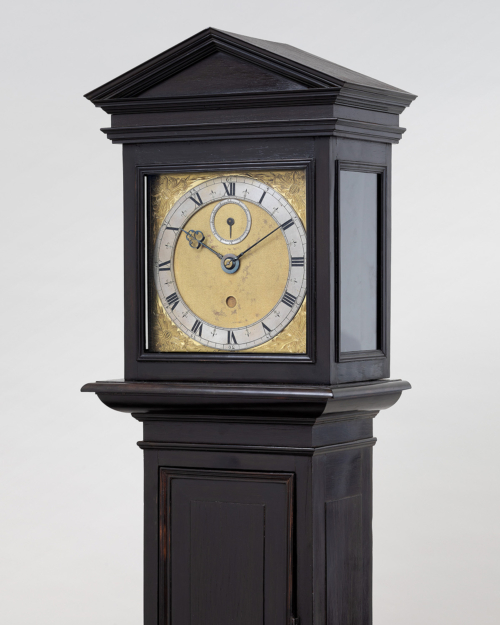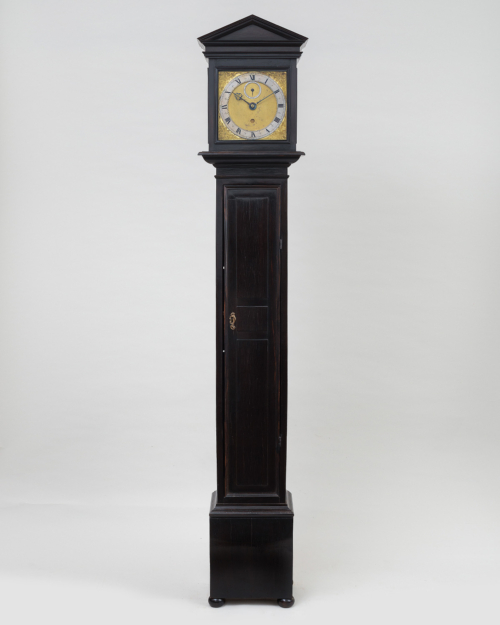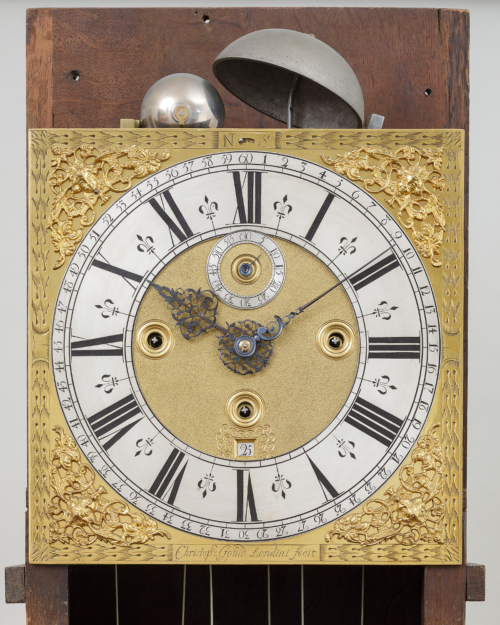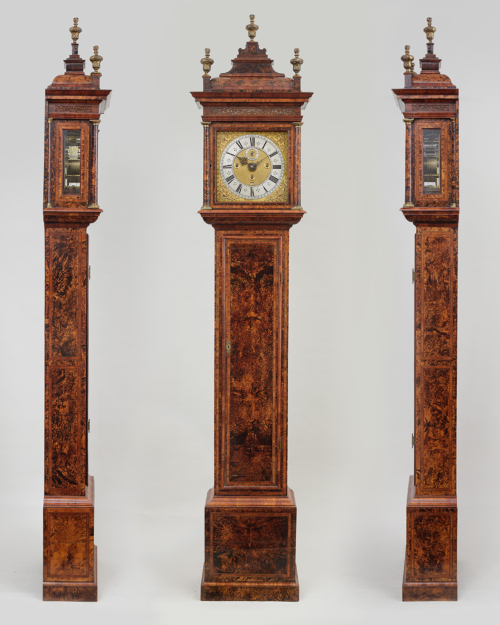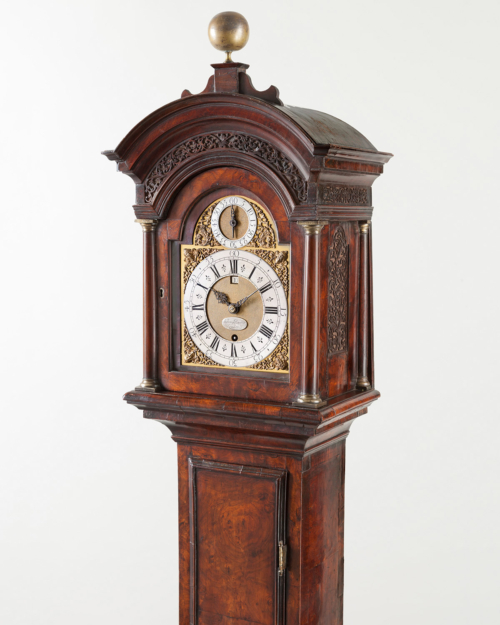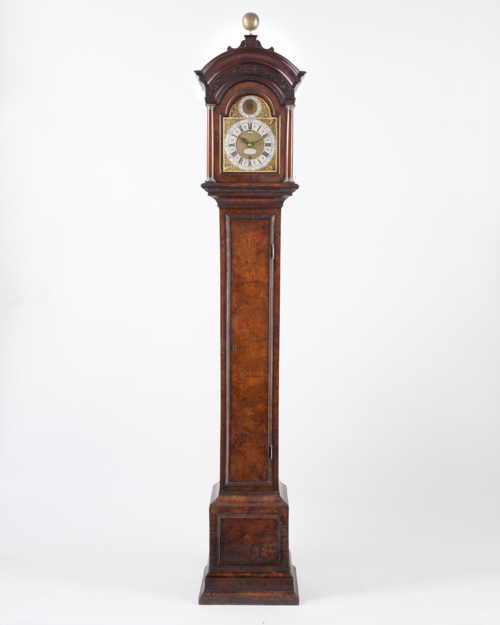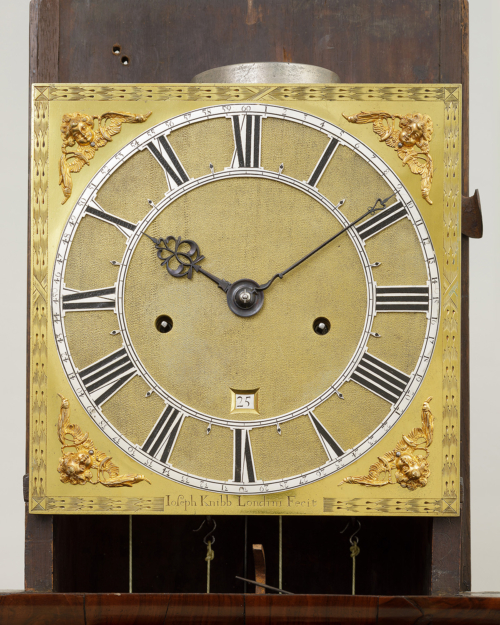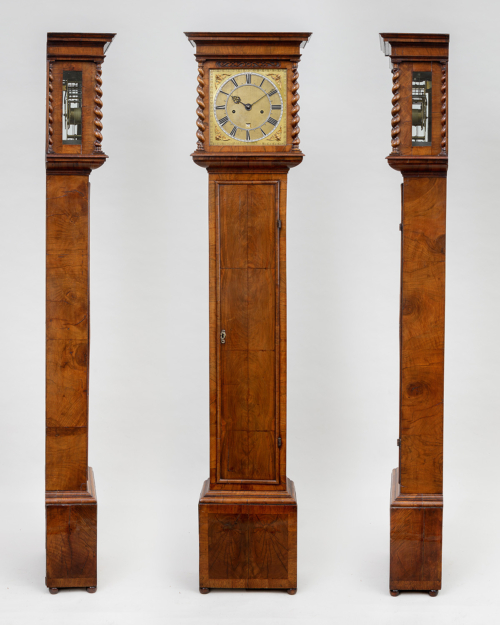| Height | 6 feet 5 inches (1955 mm) |
| Case | The case veneered in olivewood oysters, inset by ebony and boxwood fan parquetry panels and highlighted with ebonised mouldings, onto a cariniana wood carcass. The formerly rising hood with a shallow dome top above ebonised cornice mouldings with wood sound frets to the frieze below. Supported by ebonised Solomonic reflective columns, with integral turned capitals and bases, flanking the dial aperture and matching quarter columns to the hood uprights behind the glazed side apertures. Resting upon convex throat mouldings, above the trunk door framed by D-end ebonised mouldings and inset with fan parquetry corners of ebony and boxwood, above two conforming large paterae ovals, the top patera with two parquetry star circles above and below, all set on an olivewood oyster ground. The olivewood base with a conforming parquetry fan patera and matching corners. The whole case resting on later ebonised bun feet. |
| Dial | The 10 inch (254 mm) square gilt-brass dial, large winged cherub and scroll corner spandrels with engraved foliage between and signed along the lower edge Johannes Knibb Oxonia Fecit. The silvered chapter ring with Roman hours and fleur-de-lys half-hour marks, the Arabic minutes numbered every 5 within the division ring. The finely matted centre with seconds ring below XII and a shaped and decorated date aperture above VI, flanked by low set winding holes, and with archetypal well pierced and sculpted blued steel hands. The dial fixed with four latched dial feet. |
| Movement | The movement, typical of the Knibb brothers work at this time, with six fine knopped pillars, latched to the frontplate. The going train with anchor escapement and corresponding pallet cut-out in the backplate, the pallet-arbor cocked and the pendulum suspension with fine adjustment butterfly-nut above, the brass pendulum rod with a further butterfly-nut and coarse adjustment to the threaded lenticular bob. The strike train with an outside countwheel governing the hour strike. Both trains with five wheels and reverse wound, for month duration, both fourth wheel arbors with fine baluster-shaping. |
| Duration | One month |
| Provenance | Private collection, Somerset and purchased direct in 1998; |
| Comparative Literature | RA Lee, The Knibb Family, Clockmakers, 1964, Plates 20 and 23; |
| Escapement | Anchor with one second pendulum |
| Strike Type | Outside hour countwheel mounted to the fourth wheel arbor |
Exhibit № 27. John Knibb, Oxford, Circa 1680-85
A fine and rare Charles II olivewood oyster and parquetry veneered month-going longcase clock
£135,000
The particular attraction of this very fine month-going Knibb longcase clock is the wonderful state of preservation and finish of the dial and olivewood parquetry case, which is also reassuringly constructed on a carcass of cariniana wood, for which a small proportion of the Knibb brothers’ cases are so famed. The movement is an archetypal Knibb month-going example with fine and coarse adjustment to either end of the pendulum, while each of the fourth wheel arbors have unusual and attractive decorative baluster turning.
Product Description
The particular attraction of this very fine month-going Knibb longcase clock is the wonderful state of preservation and finish of the dial and olivewood parquetry case, which is also reassuringly constructed on a carcass of cariniana wood, for which a small proportion of the Knibb brothers’ cases are so famed. The movement is an archetypal Knibb month-going example with fine and coarse adjustment to either end of the pendulum, while each of the fourth wheel arbors have unusual and attractive decorative baluster turning.
Additional information
| Dimensions | 5827373 cm |
|---|

